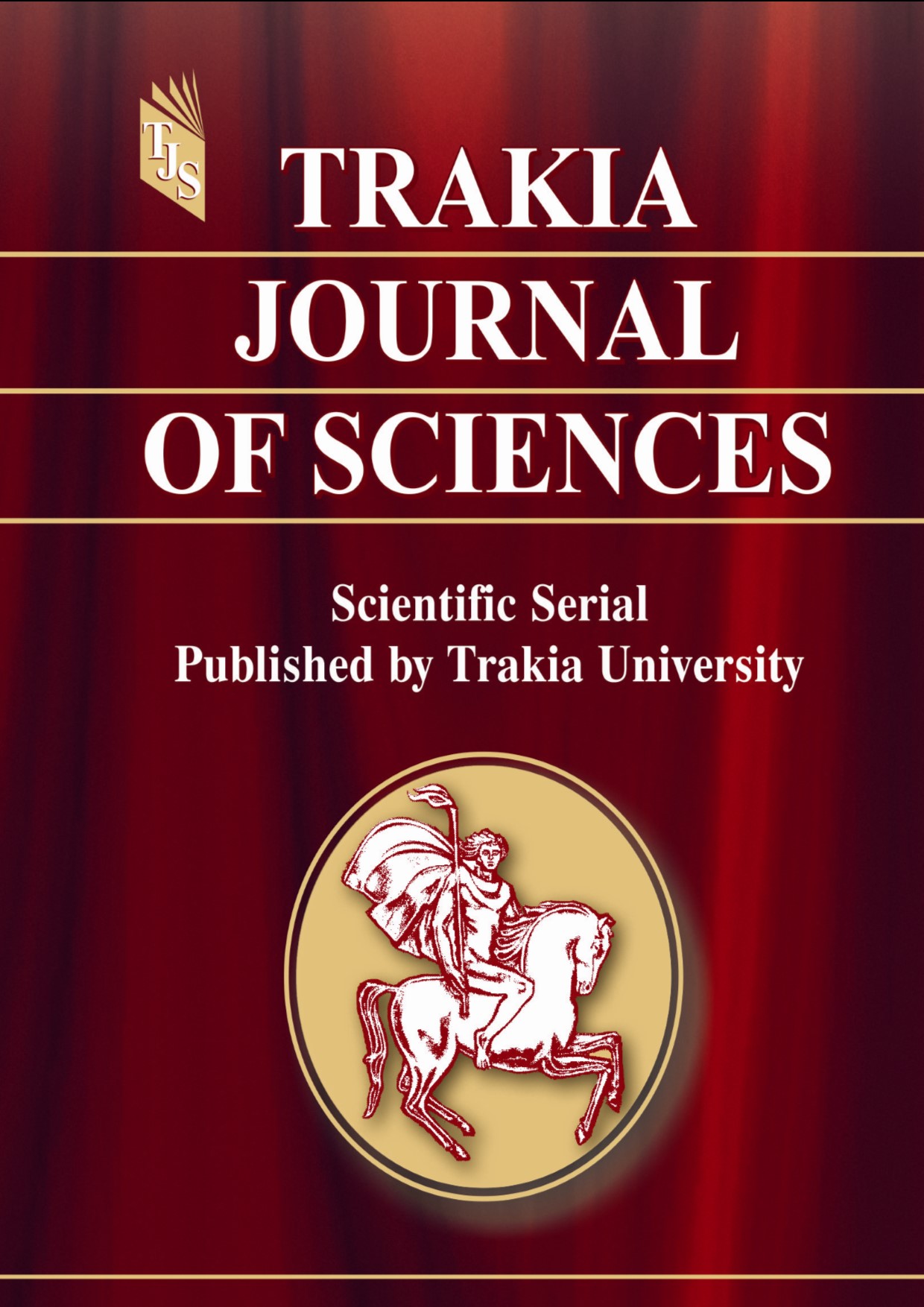EVALUATION OF THE EFFECTIVENESS OF ROTAVIRUS VACCINE FOLLOWING THE IMPLEMENTATION OF THE NATIONAL ROTAVIRUS VACCINATION PROGRAM IN BULGARIA
DOI:
https://doi.org/10.15547/tjs.2025.s.01.002Keywords:
rotavirus infections, rotavirus vaccines, Bulgaria , immunization coverageAbstract
INTRODUCTION: Rotaviruses are a leading cause of infectious diarrhea in infants and children up to 5 years of age. Their widespread distribution, high morbidity, and mortality define them as a disease of significant public health and social importance.
AIM: To study the effectiveness of the rotavirus vaccine after the introduction of the National Program for Vaccination against Rotaviruses in the Republic of Bulgaria for the period 2014–2023.
MATERIALS AND METHODS: Data from the national registration of communicable diseases in Bulgaria, published in the official reports of the National Center of Infectious and Parasitic Diseases (NCIPD) for the period 2014–2023, and data from the official websites of WHO and ECDC were analyzed. Documentary, epidemiological, descriptive, and mathematical-statistical methods were used for processing the obtained results.
RESULTS: During the period 2014–2023, rotaviruses ranked second (11%) after enterocolitis (81%) in the structure of intestinal infectious diseases in the Republic of Bulgaria, reaching the highest morbidity rate in 2017 – 40.52‰. With the introduction of the National Program for Control and Treatment of Rotavirus Gastroenteritis 2017–2021 in the country, free recommended rotavirus vaccines have been provided to all newborns. In the period 2017–2023, a significant increase in immunization coverage of newborns has been observed, reaching from 17.9% in 2017 to 43% in 2023. A high correlation is reported between the number of immunized children and the number of cases (r = –0.74), as during the same period the morbidity rate of RGE decreased significantly to 9.72‰ in 2023.
CONCLUSION: With the increase in immunization coverage with rotavirus vaccines in children during 2017–2023, a significant reduction in morbidity from RGE was observed, which clearly demonstrates the effectiveness of the rotavirus vaccine.
References
Gotseva A. Rotavirus infections. MedInfo, 2014;6.
Tate JE, Burton AH, Boschi-Pinto C, et al. 2008 estimate of worldwide rotavirus-associated mortality in children younger than 5 years before the introduction of universal rotavirus vaccination programmes: a systematic review and meta-analysis. Lancet Infect Dis. 2012;12(2):136–141.
Mangarov A. Modern rehydration therapy in acute intestinal infections in infants and young children. Dissertation, Sofia, 1986.
Baymakova M, Popov G, Andonova R, Plochev K. Rotavirus gastroenteritis – a brief literature review. Medikart. 2019;4:60–66.
Gacheva N. Rotavirus infections in early childhood – the need for immunoprophylaxis. MedInfo. 2015;2.
Korsun N, Mladenova Z. Recommendations for rotavirus vaccine use in Europe. MedInfo. 2008;8.
WHO. Statement on the risks and benefits of rotavirus vaccines Rotarix and RotaTeq. https://www.who.int/groups/global-advisory-committee-on-vaccine-safety/topics/rotavirus-vaccines/
Widdowson M-A, Meltzer MI, Zhang X, et al. Cost-effectiveness and potential impact of rotavirus vaccination in the United States. Pediatrics. 2007;119:684–697.
Ghaswalla PK, D’Angelo J, Abu-Elyazeed R. Rotavirus vaccination in the United States: a systematic review of vaccination coverage and completion. Hum Vaccin Immunother. 2021;17(3):872.
de Oliveria LH, Danovaro-Holliday MC, Ruiz Matus C, Andrus JK. Rotavirus Vaccine Introduction in the Americas: Progress and Lessons Learned. Expert Rev Vaccines. 2008;7(3):345–353.
Standaert B, Strens D, Pereira P, Benninghoff B, Raes M. Lessons learned from the long-term evaluation of rotavirus vaccination in a high-income country: the case of the rotavirus vaccine Belgium Impact Study (RotaBIS). Infect Dis Ther. 2020;9(4):967–980.
Braeckman T, Van Herck K, Meyer N, et al. Effectiveness of rotavirus vaccination in prevention of hospital admissions for rotavirus gastroenteritis among young children in Belgium: case-control study. BMJ. 2012;345:e4752.
Hemming-Harlo M, Gylling A, Herse F, et al. Long-term surveillance of rotavirus vaccination after implementation of a national immunization program in Finland (2008–2018). Vaccine. 2022;40(29):3942–3947.
Vladimirova, N.; Minkova, A.; Bogdanov, N.; Petkova, K.; Getsova, Zh.; Kamenov, G. National Center of Infectious and Parasitic Diseases (NCIPD). Acute Communicable Diseases in Bulgaria in 2023, Sofia, Bulgaria, 2024
Ministry of Health. Ordinance No. 21 of July 18, 2005 on the Procedure for Registration, Notification, and Reporting of Communicable Diseases; State Gazette No. 62: Sofia, Bulgaria, 2005.
Council of Ministers. National Program for Control and Treatment of Rotavirus Gastroenteritis 2017–2021; Sofia, Bulgaria, 2017.
Council of Ministers. National Program for the Prevention of Rotavirus Gastroenteritis in Bulgaria 2022–2025; Council of Ministers: Sofia, Bulgaria, 2022.

Downloads
Published
Issue
Section
License

This work is licensed under a Creative Commons Attribution-NonCommercial 4.0 International License.


